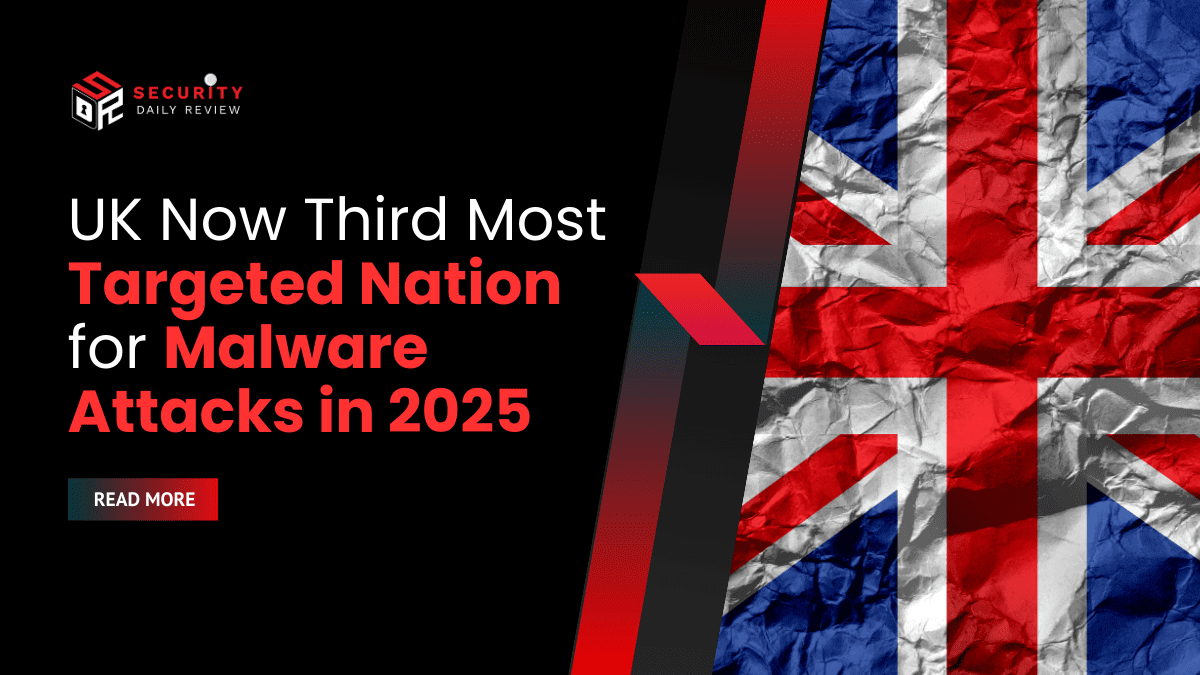The United Kingdom has recently emerged as one of the most targeted nations in the global cybersecurity landscape. New research from NordVPN reveals that the UK is now the third most targeted country in the world for malware attacks—trailing only the United States and Canada. With over 100 million cyberattacks recorded in just a three-month timespan during 2025, the statistics present a stark wake-up call to cybersecurity professionals and policymakers across the country.
Attacks are Scaling with Growing Digital Dependency
The data by NordVPN highlights a 7% quarter-over-quarter increase in malware threats in the UK between the first and second quarters of 2025. This sustained upward trend reflects a global surge in malicious activity but also speaks directly to the UK’s specific vulnerability in the current cyber threat environment.
The UK’s Digital Economy Makes it a Prime Target
There are structural reasons why the UK is such an appealing target for cybercriminals. As a highly digital economy with a high average per capita income, the UK presents numerous avenues for attackers to profit. Everyday consumers are routinely targeted through:
- Phishing emails and social engineering scams
- Fake SMS messages—sometimes dubbed “smishing”
- Malicious websites and poisoned search results
- Malware-laced email attachments
Threat actors are also leveraging impersonation tactics—posing as major corporations such as Amazon and Google or government agencies like HMRC (Her Majesty’s Revenue and Customs)—to extract personal data and financial information.
Ransomware and Identity Theft Reflect the Severity of Threats
According to Integrity360 and other corroborating sources, the rise in malware is also driving an explosion in secondary cybercrimes such as ransomware attacks and identity fraud.
Ransomware Incidents are Surging
As of 2024, ransomware incidents in the UK have increased by a staggering 70% compared to prior years. Organizations are now reporting thousands of attempted cyberattacks per week. Some result in severe financial damage, with individual victims losing hundreds of thousands of pounds. Businesses have reported an average loss of £10,830 per incident, reflecting just how costly prevention failures can be.
Identity Fraud Hits Record Highs
Beyond ransomware, identity fraud has surged alongside phishing and malware campaigns. By tricking consumers into revealing personally identifiable information (PII), attackers can open fraudulent accounts, redirect benefits, or perform unauthorized transactions. These activities reflect a well-integrated cybercrime economy in which malware functions as the initial access vector for more elaborate schemes.
Businesses Bear the Financial and Operational Burden
In 2024 alone, UK businesses reported experiencing over 7.78 million cyberattacks. AN Security’s research states that this equates to approximately 720,000 attempted cyber intrusions per business. This figure puts a spotlight on the operational strain many enterprises are under—especially small and medium-sized companies that often lack dedicated incident response teams.The cumulative financial cost is also substantial. Cybercrime now costs the UK economy an estimated £27 billion annually, with private sector businesses absorbing the lion’s share of that burden.
A Consistent Trend of High Malware Exposure
While the recent 2025 data signals a sharp rise, the UK’s exposure to malware is far from new. Statista reports that in 2022, UK organizations experienced nearly 433 million malware attacks—ranking second worldwide at the time, ahead of India and just behind the United States. The long-term trajectory confirms this is not a fleeting issue but an embedded trend that demands sustained investment in cybersecurity infrastructure.
Key Takeaways for Cybersecurity Teams and Policymakers
The latest findings underscore the rising urgency for both corporate and public-sector organizations across the UK to harden their cybersecurity protocols:
- Phishing Preventive Measures Must Be a Priority: With 84% of breaches in 2024 involving phishing, user training and email filtering solutions are essential first lines of defense.
- Ransomware Defenses Must Be Strengthened: Businesses must adopt robust backup and recovery procedures, implement multi-factor authentication (MFA), and segment networks to minimize the lateral movement of threat actors.
- Consumer Awareness Campaigns Are Essential: Given the surge in impersonation scams, public education campaigns focused on spotting fraudulent emails or texts could reduce exploitation rates.
- Incident Detection and Response Capability Needs Investment: Enterprises should deepen their logging, threat hunting, and SOC (Security Operations Center) capabilities, especially as weekly attacks reach into the thousands for many organizations.
Malware Surge Places UK at a Strategic Crossroads
The United Kingdom’s ascension to the third most targeted country for malware is more than a statistical milestone—it’s an alarming indicator of its elevated position in the global cyber threat matrix. While attackers continue to evolve their techniques, UK organizations and citizens alike must do the same to defend against increasingly aggressive campaigns. The growth in UK malware attacks is not only a reflection of technological dependency but also a call to evolve national and corporate defenses at pace with adversarial tactics.









